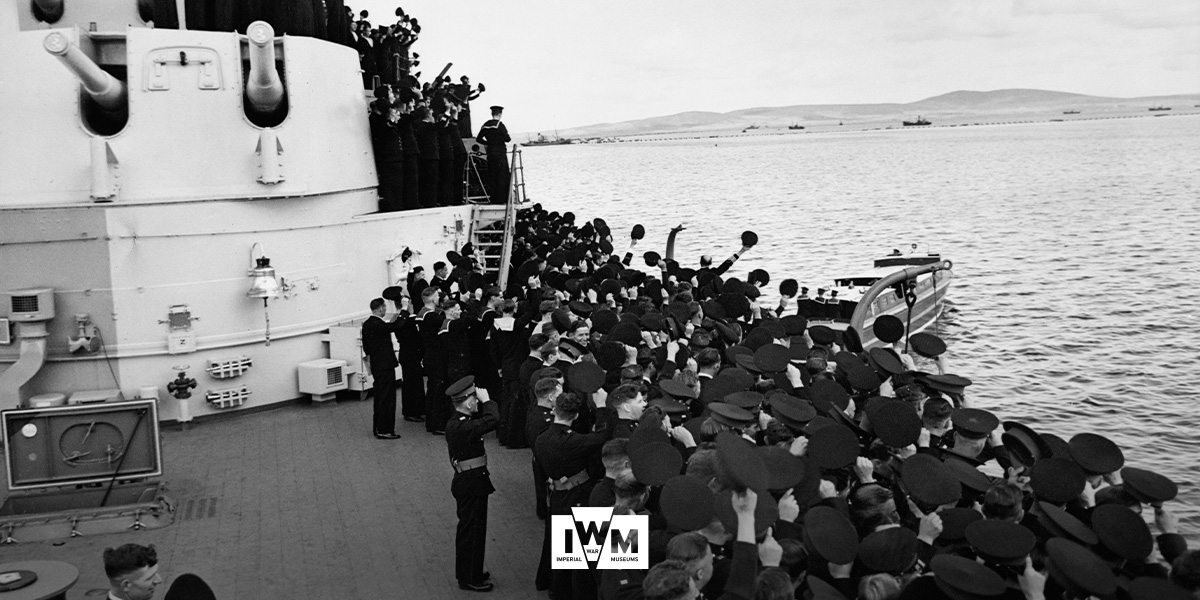
Commissioned into the Royal Navy in August 1939, only days before the outbreak of the Second World War, Belfast went on to play a pivotal role in that global conflict, as well as the Korean War and Cold War.
Placed in reserve, it continued to serve until 1971 when its historic importance was recognised by being selected as the first warship since Nelson’s HMS Victory to be saved for the nation.
Over 25 years of operational service, HMS Belfast travelled some half a million miles around the world. It visited around 40 different countries, traversing the world’s major oceans, from the Atlantic Ocean and Pacific Ocean to the Mediterranean Sea and the Indian Ocean.
At the outbreak of the Second World War, the Royal Navy still made Britain one of the world’s strongest naval powers. Its fleet was vast, ranging from massive capital ships to much smaller coastal vessels. As war took hold, the number of people serving in these ships, as well as naval bases around Britain’s coast and across the world, steadily grew.
Once again it became the task of the Royal Navy to defend Britain and ensure the safe passage of people and goods in and out of the British Isles.
The last of ten ‘Southampton-class’ cruisers built in the 1930s (commonly called ‘Town-class’ on account of them being named after British towns and cities), Belfast quickly became one of the most imposing vessels in the British fleet. When launched, HMS Belfast and its sister ship HMS Edinburgh were both considered the most advanced vessels in their class.
Throughout its years of active service, Belfast was fortunate to be commanded by a string of charismatic captains, who each radiated their own personalities across the hundreds of men who formed the ship’s company.
In the Royal Navy, a ‘happy ship’ is a well-run, efficient ship in which each of its crewmembers has a sense of purpose and knows what their job is within the wider working of the ship. HMS Belfast was always a ‘happy ship’, as Ron Jesse, one of its engine room technicians during the Second World War, explains.
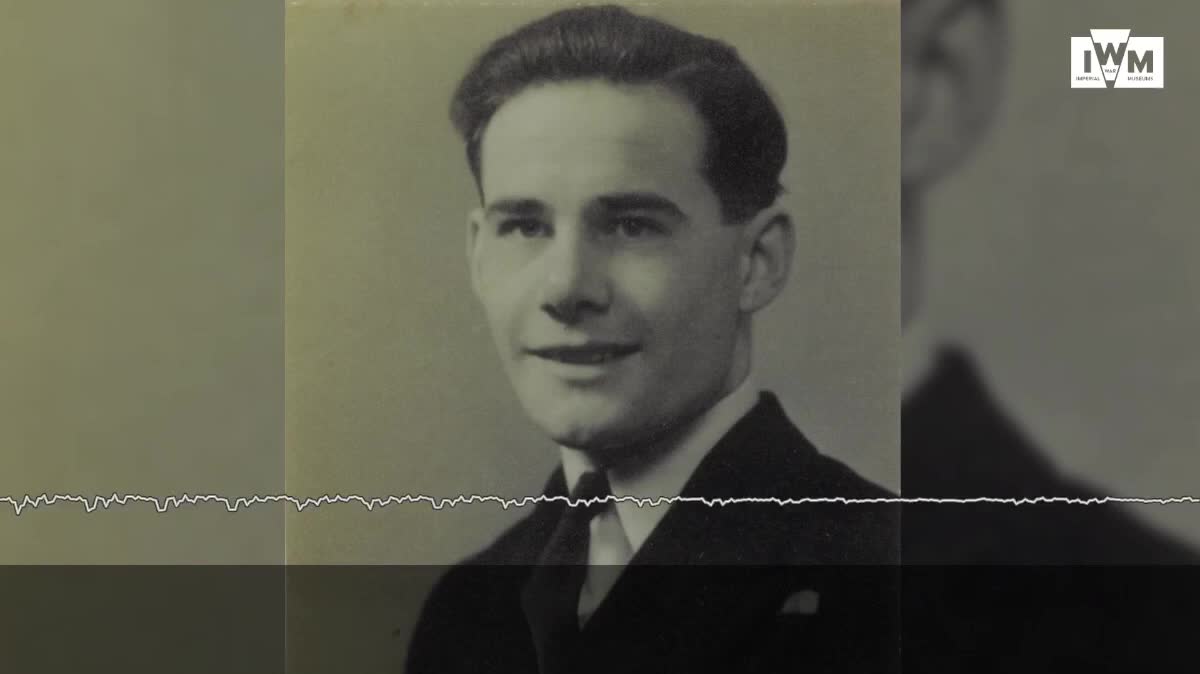
With around 800–900 men serving on board at any one time, life could be crowded aboard Belfast. Men lived and ate on mess decks, which had a series of horizontal bars across the ceiling (known in the navy as the ‘deck head’) to which the sailors tied their hammocks.
At night, the upper half of all the mess decks was absolutely packed, as Harry Shedd, who joined the ship in Sydney in 1946, explains.
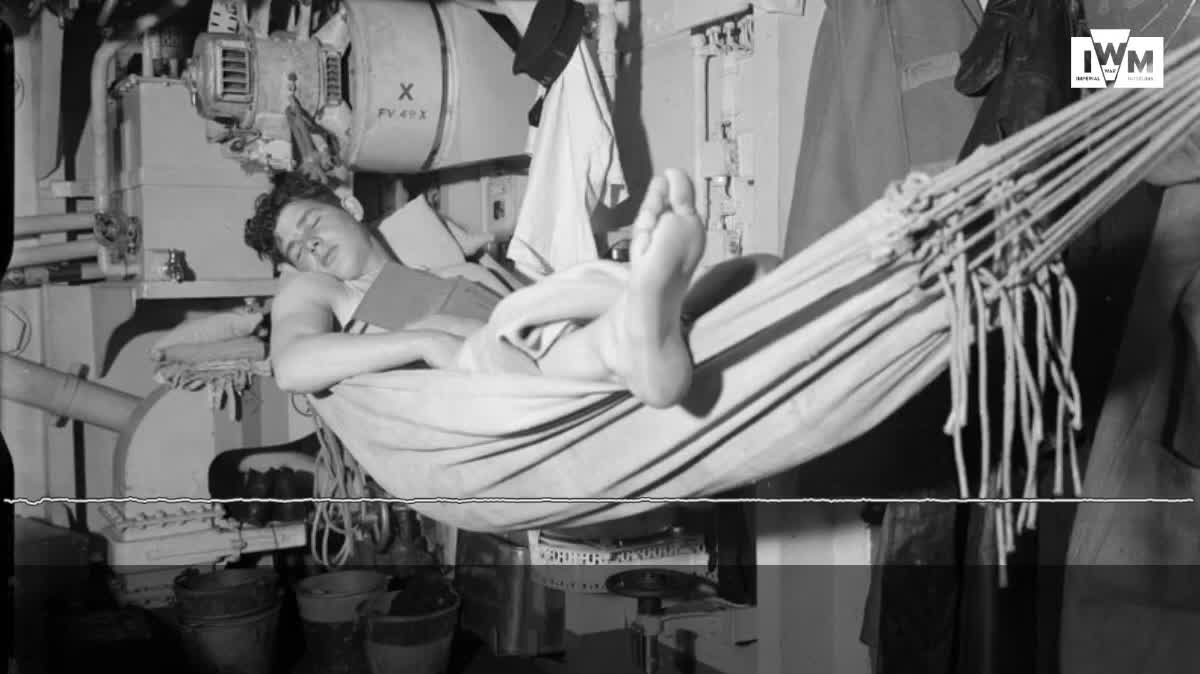
When the hammocks on the deck were put away for the day, they were replaced by tables. Each table was a single mess around which 12 to 15 men focused their daily lives and there were many mess tables on every deck. Ted Hill, a young stoker during the Korean War, described how it worked.
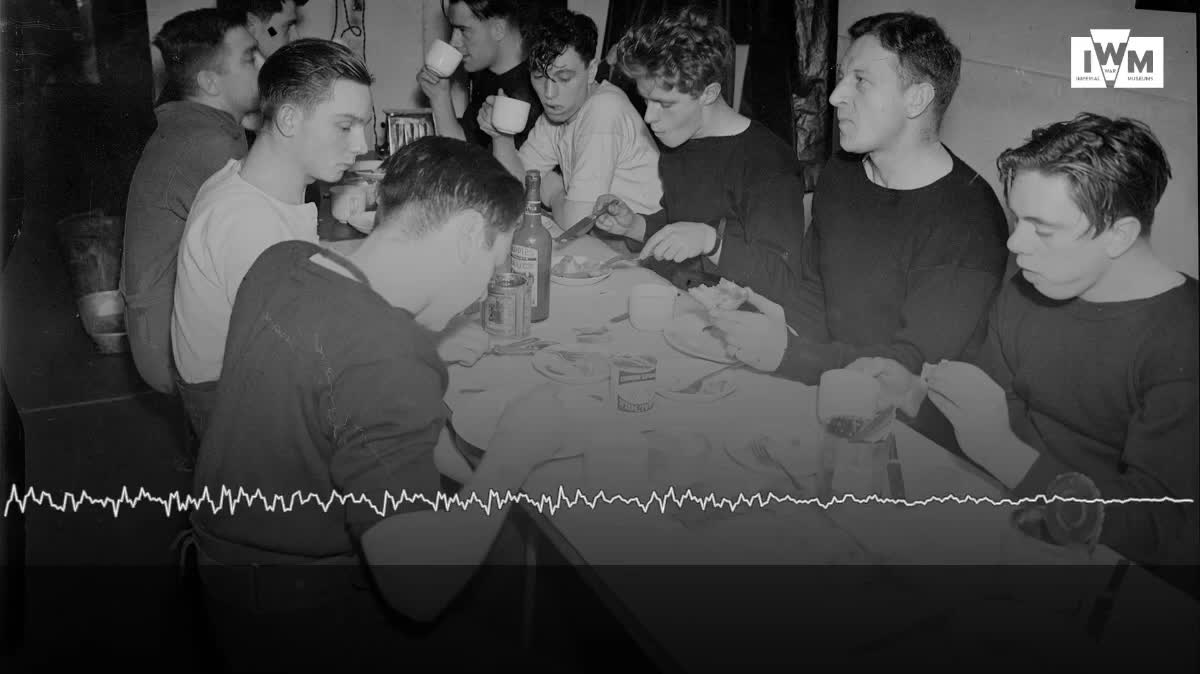
Food was cooked in a separate galley and every day, one man from each mess would be the ‘cook of the mess’, which meant they were responsible for collecting the food and bringing it back to the mess, as once again Ted Hill explains.
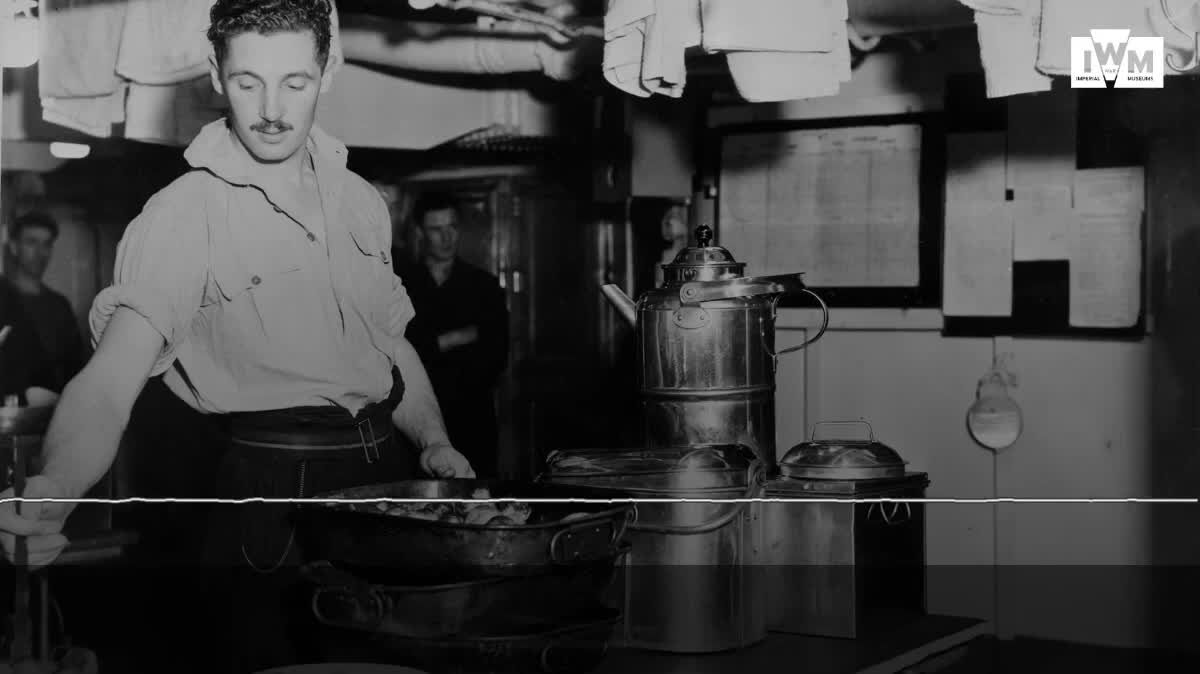
With almost 1,000 officers and men to feed three times a day, food was cooked on an industrial scale. Ingredients were consumed voraciously and between HMS Belfast’s 26 cooks and six bakers, more than 18,000 meals were produced every week.
In August 1939, when the ship was stocked for the first time, Belfast took on board ‘20 tonnes flour, 5 tonnes potatoes, half tonne onions, four tonnes beef … one and a half tonnes of bacon, half a tonne of cheese … [and] a quarter of a tonne of sausages’.
Those on board liked thick, rich food like meat stews in gravy (known a ‘pot mess’), sausages, shepherd’s pie and roast dinners. Stodgy desserts served with custard were popular too, such as roly poly pudding or plum and apple ‘duff’, a dish featuring sweetened stewed fruits in a thick, crumble-like batter.
A separate bakery on board made cakes, rolls and fresh bread. Saved the challenge of storing and preserving the bread, this meant that during periods of action, when meals could not be served, an ‘action dinner’ was possible.
During the Battle of North Cape on 26 December 1943, the fighting paused in the late morning and the ship’s Executive Officer ordered action messing at around 11.00, with food served to the men in lieu of lunch, which was always known to the men as ‘dinner’. The meal consisted of hot soup, meat pies and a jam tart. When the battle resumed later in the afternoon, the fact that the men were not hungry greatly helped their performance.
The men topped up their regular food with special treats and luxuries from HMS Belfast’s canteen. Often referred to as the NAAFI (short for Navy, Army and Air Force Institute) for those who operated it, visits to the canteen provided a welcome change to routine life and a ‘taste of home’, offering items such as beer, chocolate and cigarettes, in addition to daily essentials like razors, writing materials and toiletries.
Every day, those serving in the Royal Navy over the age of 21 years old were given a daily ration of rum, also known as ‘a tot’, as part of a British naval tradition that dates to the mid seventeenth century.
Transported in barrels, these rations were measured out and issued as a ‘gill’, a unit equal to a quarter of a pint, with the rum mixed 50:50 with water. This precious mixture, known as ‘grog’, was collected every day when ‘spirits up’ was called and taken back to each mess to be shared around. The rum ration continued in the Royal Navy until July 1970 when it was finally laid to rest.
During their long tours at sea, those serving aboard Belfast would keep themselves busy when not on watch in a variety of ways, from reading and relaxing to playing cards and dominos, but most of the men’s favourite game was the Royal Navy staple of ‘Ukkers’. Fred Wooding, who served in HMS Belfast just before Korea, remembers this fun tradition.
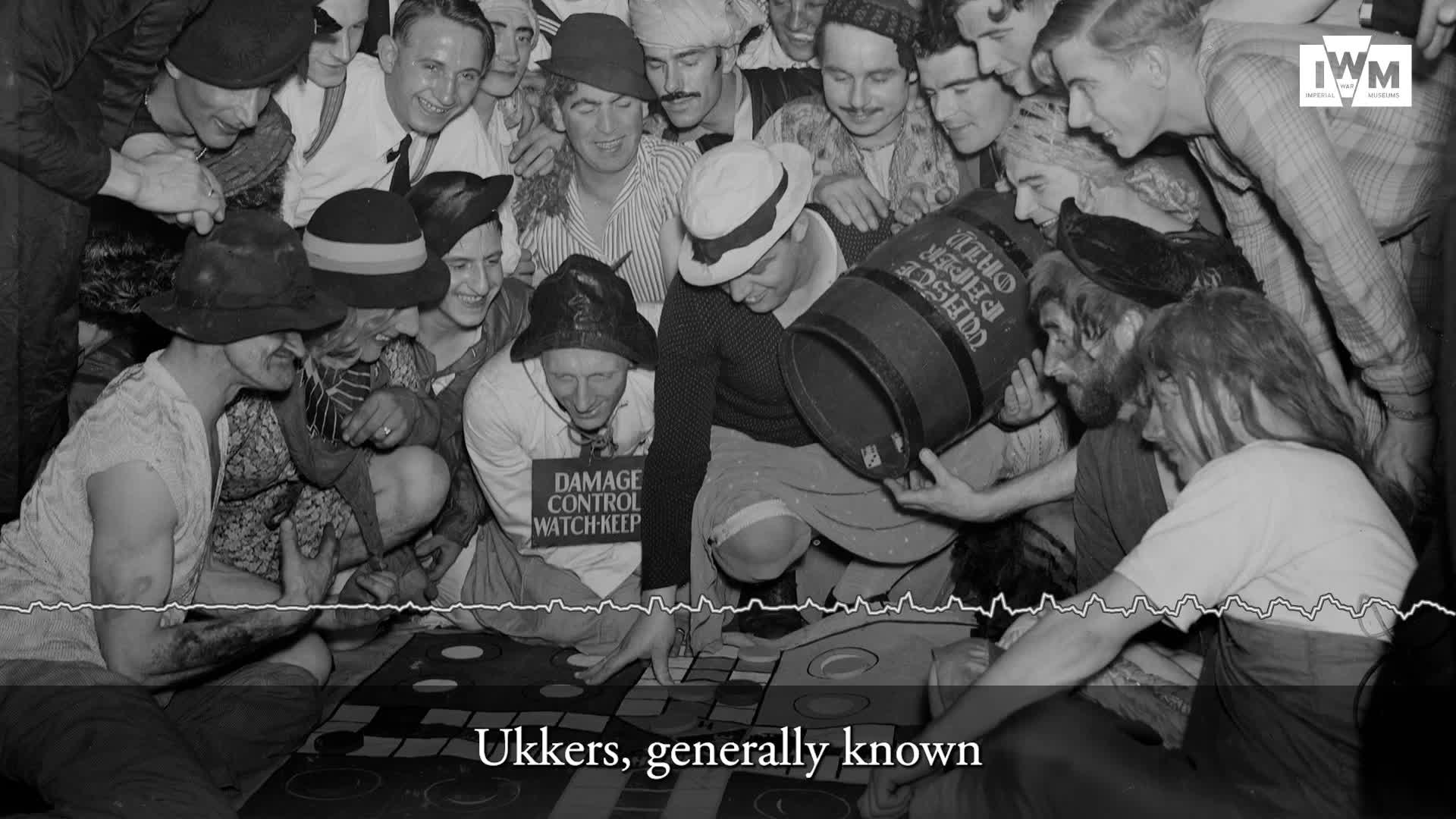
Maybe it wasn’t the game, but the fact that the shared experience of living, working and playing on board truly made Belfast a happy ship.
Today, in the shadow of Tower Bridge, HMS Belfast is now a ‘museum ship’ that welcomes tens of thousands of visitors every year. The only surviving British gunship from the Normandy landings and Korean War, it is a unique piece of military and social history. Looking back, Gordon Painter, a teenager who witnessed D-Day from inside Belfast's gun turrets, perhaps sums it up best.
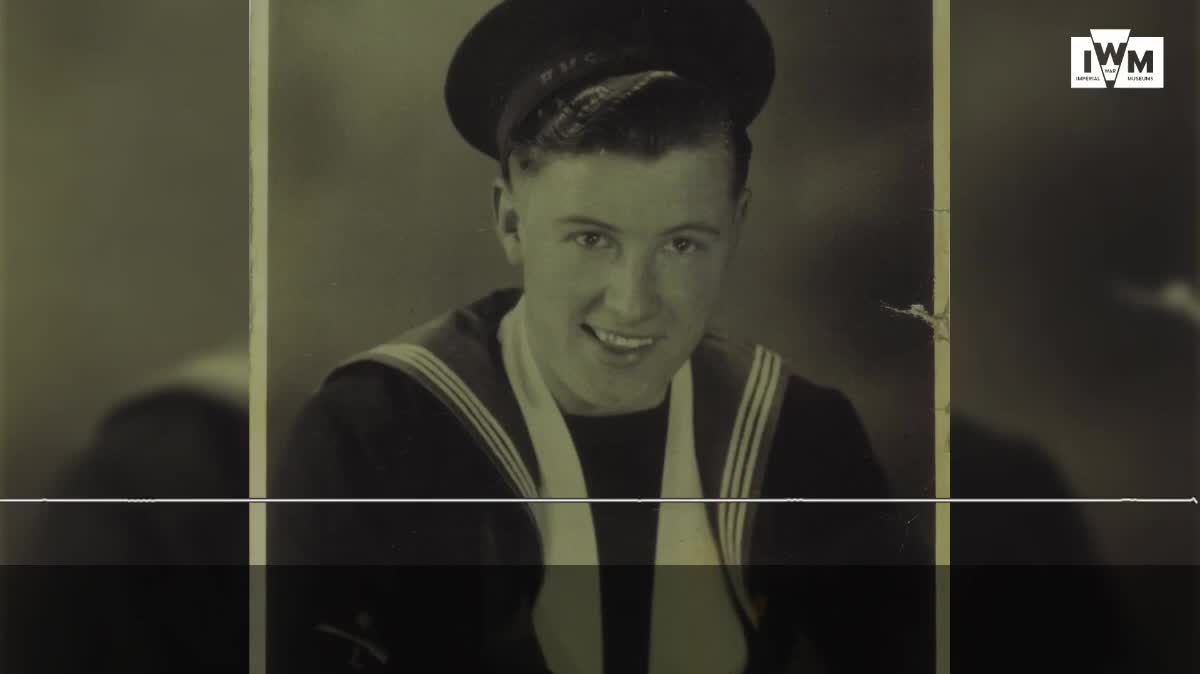
In recognition of this, The Royal Mint has produced the HMS Belfast 2025 UK Coin as a fitting tribute to this battle-hardened vessel and all those that served in it throughout its 25 years of active duty. It is the first of its kind to pay tribute to the ship’s incredible legacy.
Designed by talented sculptor Gary Breeze, the man behind previous coin designs honouring the 95th birthday of Queen Elizabeth II, the Battle of Britain and Remembrance Day, the reverse of the HMS Belfast 2025 UK coin features the historic warship as it appeared from the 1960s onwards.
The coin also features a poignant edge inscription that bears ‘PRO · TANTO · QVID · RETRIBVAMVS’, the ship’s motto in Latin that translates to ‘For so much, how shall we repay?’
By securing your own HMS Belfast coin, you can celebrate the history and spirit of this iconic vessel and add this numismatic tribute to the legendary ship to your military coin collection today.
